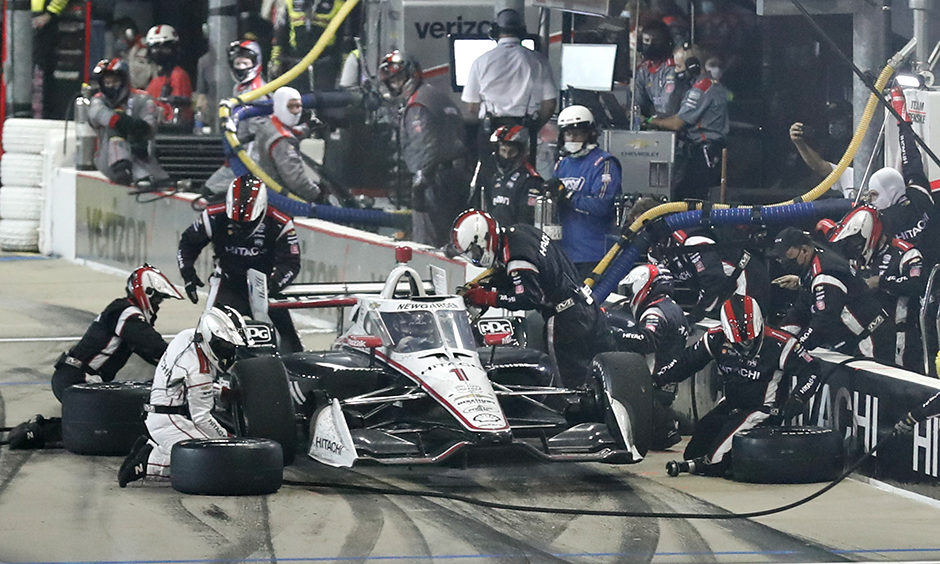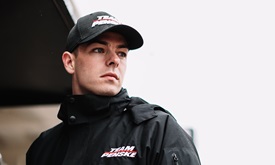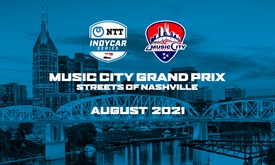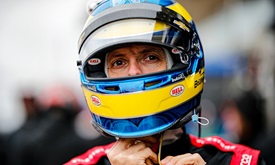Top INDYCAR Teams Chasing Titles on Track and Pit Lane
SEP 18, 2020
Success on an NTT INDYCAR SERIES racetrack is the combination of hard work and dedication of the many crew members back in the shops and on pit road, where a high-speed ballet sets pit crew members and their tools of the trade against the stopwatch.
A pit crew that can change four Firestone Firehawk tires, fill the car with 18 gallons of Speedway E85 fuel and make adjustments to the front and rear wings in the shortest amount of time can be the difference between victory and defeat.
Longtime NTT INDYCAR SERIES partner Firestone recognizes that, which is why the best teams on pit road are contending for the Firestone Pit Stop Performance Award.
The top-three teams with the most cumulative Pit Stop Performance Award points in the 2020 season will split a $150,000 purse at the season-ending championship celebration.
The first-place team will collect $75,000. Second place is worth $50,000 and third place will earn $25,000.
“For Firestone, it’s really an honor to sponsor this and recognize the pit crews,” said Lisa Boggs, Director, Bridgestone Americas, Motorsports. “Their dedication, their work, their passion is not surpassed by anybody in the paddock. They are the first ones at the track in the morning and the last ones to leave at night. Nothing happens without them and their dedication.”
Firestone works closely with each team including preparation of the Firehawk tires for the race. Firestone wanted to recognize the importance of each team’s pit crew and how races are often won and lost in the pits.
Although it’s the first year to have the Firestone Pit Stop Performance Award as a season-long contest, it’s not the first year of the program.
Firestone, the official tire supplier for the NTT INDYCAR SERIES, began recognizing pit crews in 2014 by honoring the pit crew that had the least amount of accumulated time in the pits and finished at least 95 percent of the scheduled laps each race weekend with $10,000.
“We’re trying something new in 2020, a season-long accumulative award that mirrors what the points of the race are,” Boggs explained. “We decided to evolve it and look at season-long performance.
“It recognizes season-long consistency and performance.”
After 11 of 14 races this season, Josef Newgarden’s No. 1 Chevrolet crew at Team Penske leads the standings. NTT INDYCAR SERIES points leader Scott Dixon’s No. 9 PNC Bank Honda crew at Chip Ganassi Racing is second. Will Power’s No. 12 Verizon Chevrolet team at Team Penske is third followed by Alexander Rossi’s No. 27 NAPA Honda crew at Andretti Autosport. Pato O’Ward’s No. 5 Chevrolet team at Arrow McLaren SP is fifth.
“This year has been hard on everybody, but it has taken a toll on what is required of the pit crews, which was difficult to begin with,” Boggs explained. “You have doubleheaders, quick-turnarounds and short weekends. The pit crews upped their games and it’s amazing.
“It’s nice this year that we have a season-long award, we can follow it all the way through and then recognize the top three crews at the end of the year.
“The focus is on them. It’s a great fit for the brand and something we are really proud to do. We’re proud of being part of the INDYCAR family and doing what we can to support everyone in the paddock. That is what this award is about.”
Making Up Time on Pit Road
Mike Hull, the managing director of Chip Ganassi Racing, calls race strategy for Dixon’s crew and oversees an impressive pit crew from atop the timing stand.
Because of the competitive nature of the NTT INDYCAR SERIES with teams running incredibly close lap times, it gets more difficult to find a competitive edge. That is why pit stops have become vitally important to the overall outcome of a race.
“I think you practice being consistent,” Hull said. “That is what our people do, they practice really, really hard to be consistent on pit lane. We have three great groups of people on the (No.) 8, 9 and 10 cars. They push each other pretty hard. They train really hard physically and mentally. They have to validate that training each time we stop in pit lane. We’ve been fortunate that our guys have done a good job and we will keep working hard to keep doing it better.”
What makes INDYCAR’s pit crews different than those found other forms of racing are the crew members are also mechanics and technicians that work on the race cars that are trained for their role on pit road.
“We are a little different than NASCAR in that regard,” Hull explained. “But we are very efficient, and we have learned that they have to be physically able to do it and stay in shape. That is the biggest difference they are working on now. We have moved with the times forward and it pays off on pit lane.”
So, how does an INDYCAR pit stop work?
It begins with the decisions that are made between the race strategist and the engineer, then relayed to the crew chief.
“We are all on the intercom, so everybody knows what is going on,” Team Penske INDYCAR General Manager Kyle Moyer explained. Moyer calls race strategy for 2019 Indianapolis 500 winner and 2016 NTT INDYCAR SERIES champion Simon Pagenaud.
“Ben Bretzman is our engineer and we will talk over situations and decide,” Moyer continued. “The strategist makes the final call. The crew chief understands and hears if we need to make a change on the front right or rear wing, he’ll get involved how he wants to do it. It’s all a team effort.
“When it’s all said and done, it’s a group of people getting from Point A to Point B.”
Each crew member must possess ample amounts of bravery because they are constantly in harm’s way, from crashes on pit road to pit fires, which today have become very rare.
“Is it dangerous? Yes,” Moyer said. “But we used to do it without pit lane speeds. Guys were flying behind you at Indianapolis going 125 or 150 mph, right behind you, right on your tails. We didn’t have helmets on. There weren’t the penalties then that you have now. The brakes weren’t as good on these cars.
“Today, it’s a lot safer. INDYCAR has done a great job with safety.”
Racing the Stopwatch
As the man set up nearest the pit exit lane, Trevor Lacasse often feels a close call more than seeing it.
“The closest you really get are on a full pit lane, under yellow, everybody is in, guys all around you on a tight pit stop,” said Lacasse, the chief mechanic for Simon Pagenaud’s car. “That’s a tough one. If you have a car coming behind you, you can feel them buzzing the back of your leg.”
Beating another car out of the pits is the purpose of the pit crew. While the race on the track is driver vs. driver, the race off pit lane is always against the clock.
“Back when I started in racing, you tried to shave one second off your pit stop,” Moyer recalled. “Now, you are trying to shave a tenth-of-a-second off your pit stop.
“One-tenth is half a car. Two-tenths is beating another car out of the pits.”
At the end of the season, the most proficient pit crews in the NTT INDYCAR SERIES will be honored by Firestone for a job well done on pit road.
“I think it’s important they are recognized,” Hull said. “To have a company as large as Firestone recognize the workmanship that goes on in pit lane and the garage area and in preparation of the cars is really important for our people.”



















